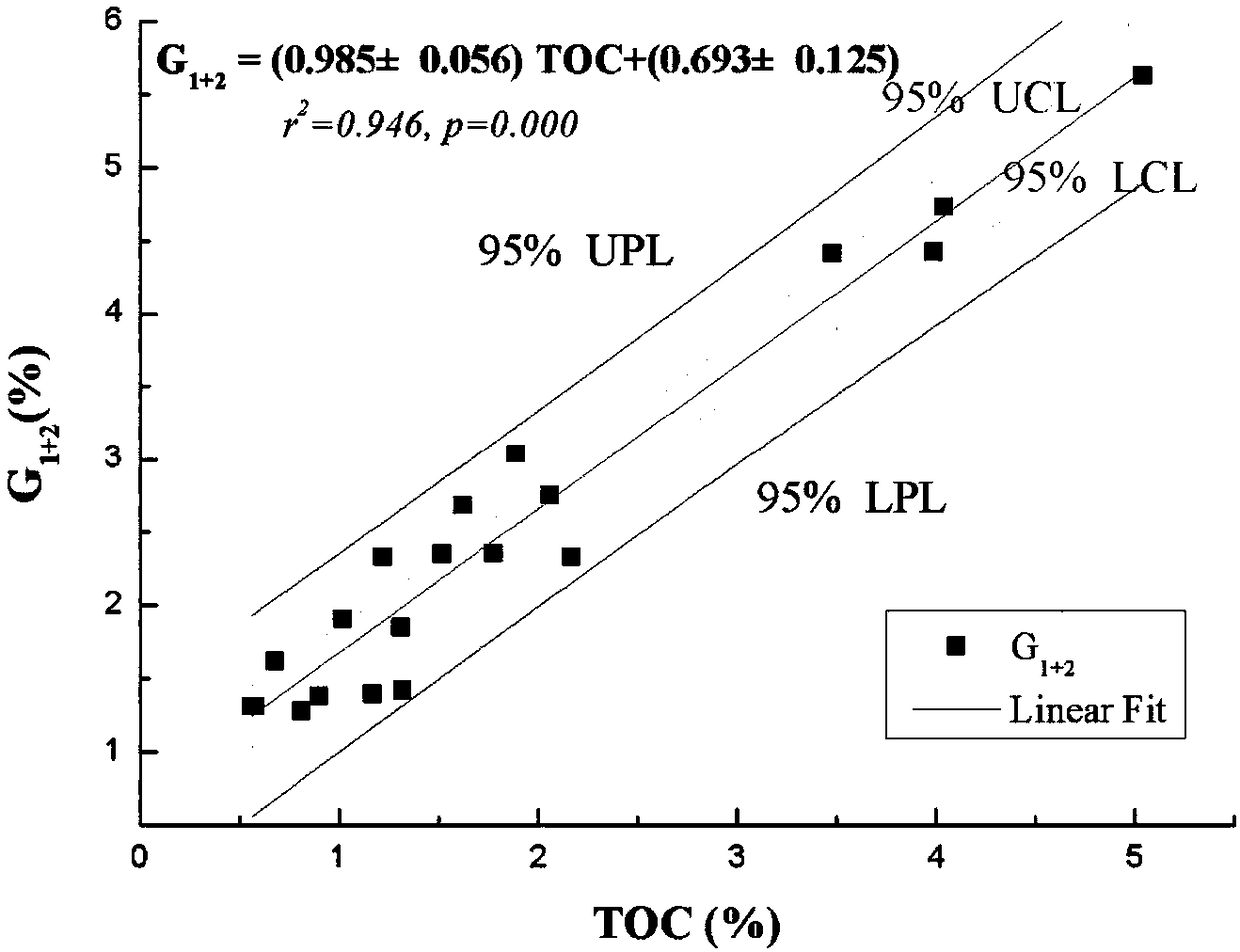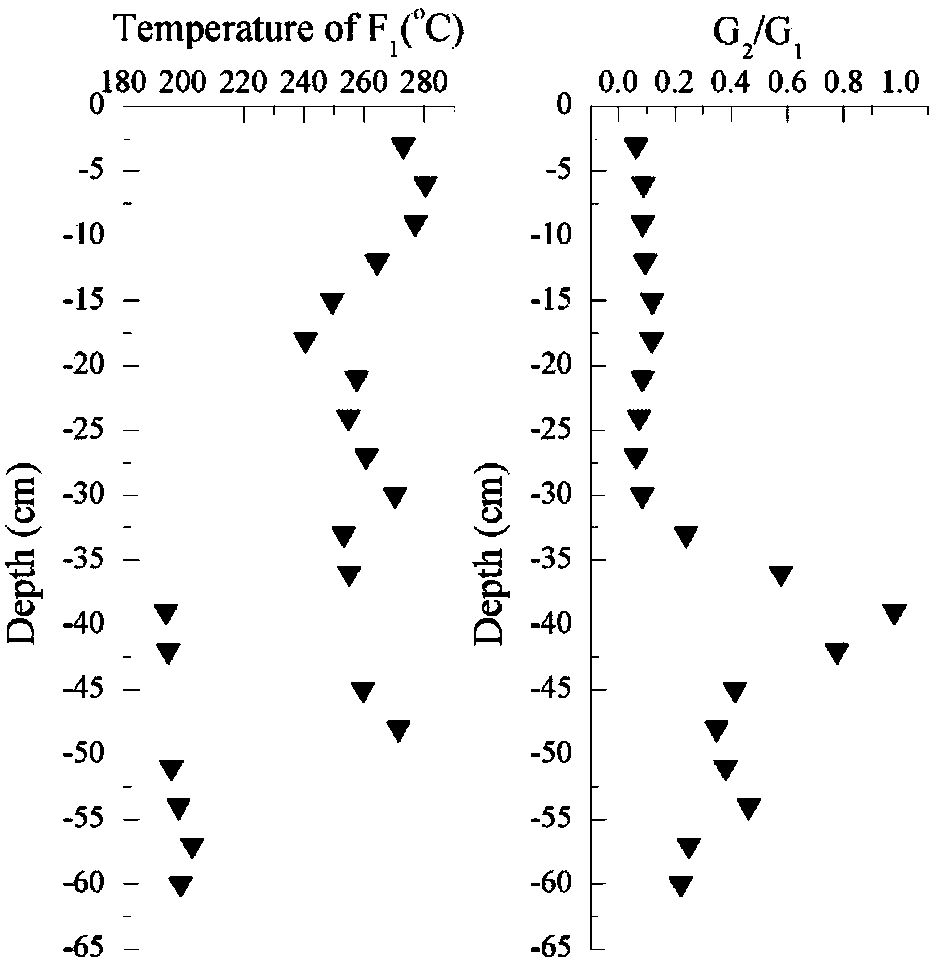Thermal Appraisal Method for Early Diagenetic Evolution Degree of Sediment Organic Matter
A technology of evolution degree and sediment, which is applied in the field of thermal identification of early diagenetic evolution degree of sediment organic matter, can solve the problems of inability to analyze thermodynamic information relationship, inability to obtain thermodynamic information, inability to detect thermal transition behavior, etc.
- Summary
- Abstract
- Description
- Claims
- Application Information
AI Technical Summary
Problems solved by technology
Method used
Image
Examples
Embodiment 1
[0042] A thermal identification method for the early diagenetic evolution degree of sediment organic matter in continental sedimentary basins, including the following steps:
[0043] Step 1. Pretreatment of sediment samples
[0044] Using a portable gravity-type sediment sampler, 60cm of column core sediment was collected in Bosten Lake, 20 pieces were selected, and the sediment was separated by 3cm on site, and put into disposable sealed bags, and the air in the bag was drained, and transported back to the laboratory , the sediment sample was freeze-dried, weighed, ground through an 80-mesh sieve, and frozen for future use.
[0045] Step 2. Thermogravimetric analysis (TGA) of sediment samples
[0046] 10.0 mg of the pretreated sediment sample was placed in a platinum tray, and thermal analysis was performed by a thermogravimetric analyzer (TGA) to obtain a TGA curve;
[0047] Step 3. Differential calorimetry scanning (DSC) of sediment samples
[0048] 10.0 mg of the pretre...
Embodiment 2
[0084] A thermal identification method for the early diagenetic evolution degree of sediment organic matter in continental sedimentary basins, including the following steps:
[0085] Step 1. Pretreatment of sediment samples
[0086] Separate the collected sediment cores by 1 cm and put them into disposable sealed bags; weigh them after freeze-drying, grind them through 80-100 mesh sieves, and freeze them for later use;
[0087] Step 2. Thermogravimetric analysis (TGA) of sediment samples
[0088] 9.8 mg of the pretreated sediment sample was placed in a platinum tray, and thermal analysis was performed by a thermogravimetric analyzer (TGA) to obtain a TGA curve;
[0089] Step 3. Differential calorimetry scanning (DSC) of sediment samples
[0090] 9.8 mg of the pretreated sediment sample was placed in a standard aluminum pan, and a thermal analysis was performed by a differential calorimetry scanner (DSC) to obtain a DSC spectrum;
[0091] Step 4: Interpret the TGA spectrum t...
Embodiment 3
[0105] A thermal identification method for the early diagenetic evolution degree of sediment organic matter in continental sedimentary basins, including the following steps:
[0106] Step 1. Pretreatment of sediment samples
[0107] Separate the collected sediment cores by 2 cm and put them into disposable sealed bags; weigh them after freeze-drying, grind them through 80-100 mesh sieves, and freeze them for later use;
[0108] Step 2. Thermogravimetric analysis (TGA) of sediment samples
[0109] 10.2 mg of the pretreated sediment sample was placed in a platinum tray, and thermal analysis was performed by a thermogravimetric analyzer (TGA) to obtain a TGA curve;
[0110] Step 3. Differential calorimetry scanning (DSC) of sediment samples
[0111] 10.2 mg of the pretreated sediment sample was placed in a standard aluminum pan, and a thermal analysis was performed by a differential calorimetry scanner (DSC) to obtain a DSC spectrum;
[0112] Step 4: Interpret the TGA spectrum...
PUM
| Property | Measurement | Unit |
|---|---|---|
| temperature | aaaaa | aaaaa |
Abstract
Description
Claims
Application Information
 Login to View More
Login to View More - R&D
- Intellectual Property
- Life Sciences
- Materials
- Tech Scout
- Unparalleled Data Quality
- Higher Quality Content
- 60% Fewer Hallucinations
Browse by: Latest US Patents, China's latest patents, Technical Efficacy Thesaurus, Application Domain, Technology Topic, Popular Technical Reports.
© 2025 PatSnap. All rights reserved.Legal|Privacy policy|Modern Slavery Act Transparency Statement|Sitemap|About US| Contact US: help@patsnap.com



